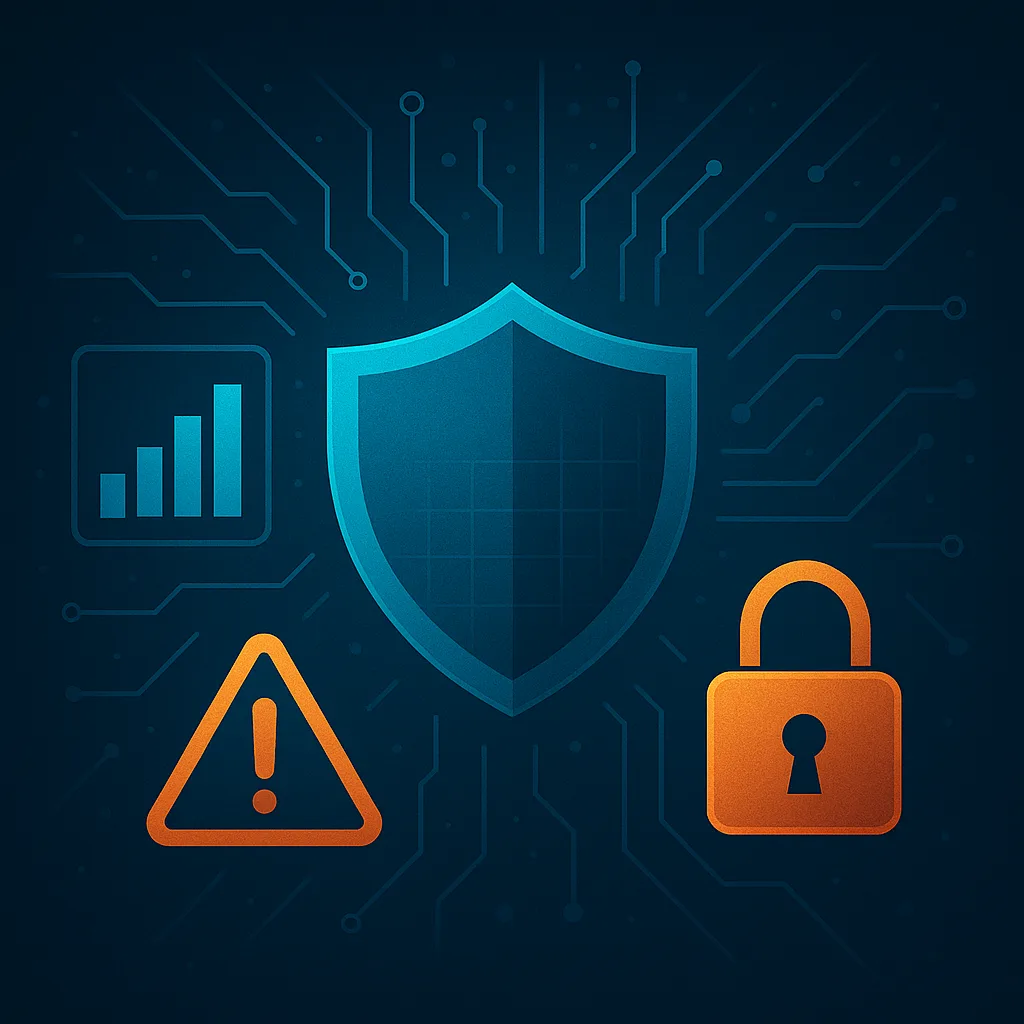Cybersecurity isn’t just a technical challenge—it’s a risk management challenge. As organizations grow increasingly dependent on digital infrastructure, the risks they face from cyber threats multiply in complexity and scale. Without a structured risk management framework, businesses leave themselves vulnerable to data breaches, financial losses, regulatory penalties, and reputational damage.
In this article, we’ll break down everything you need to know about cybersecurity risk management, including:
- What it is and why it matters
- The risk management lifecycle
- How to identify and assess cyber risks
- Tools, strategies, and frameworks used
- Best practices and common pitfalls
What Is Cybersecurity Risk Management?
Cybersecurity risk management is the ongoing process of identifying, analyzing, evaluating, and addressing an organization’s exposure to cyber threats. It ensures that digital risks are continuously monitored and mitigated to acceptable levels, in alignment with business goals and regulatory requirements.
It’s not just about preventing every breach—but about knowing which threats to prioritize and how to reduce their impact.
The Cybersecurity Risk Management Lifecycle
Effective cyber risk management involves a structured lifecycle with five key phases:
1. Identify
- Catalog assets (hardware, software, data, networks)
- Determine vulnerabilities and threat sources
- Understand business context and impact of asset compromise
2. Assess
- Perform risk assessments to determine likelihood and impact
- Use qualitative (low/medium/high) or quantitative (dollar value) methods
- Prioritize risks based on potential business damage
3. Mitigate / Treat
- Decide on risk response: accept, avoid, transfer (insurance), or reduce
- Apply technical controls (firewalls, encryption), procedural policies, and training
4. Monitor
- Continuously track threats and vulnerabilities using tools like SIEMs
- Conduct periodic reviews and re-assessments
5. Communicate & Document
- Keep leadership, compliance, and operational teams informed
- Maintain a risk register and record decisions
Types of Cybersecurity Risks
Cyber risks come in various forms. Here are the most common categories:
| Risk Type | Description | Examples |
|---|---|---|
| External Threats | Attacks from outside entities | Phishing, ransomware, DDoS |
| Insider Threats | Malicious or negligent insiders | Employee sabotage, data leaks |
| Third-Party Risks | Security vulnerabilities in vendors or partners | Supply chain attacks |
| Technology Risks | Failures or misconfigurations in IT systems | Unpatched software, misconfigured cloud |
| Compliance Risks | Violations of legal or regulatory requirements | GDPR, HIPAA breaches |
| Reputational Risks | Damage to brand or customer trust from a cyber incident | Data breach disclosure, social media backlash |
Common Risk Assessment Methods
Here are three widely used methods to assess cybersecurity risk:
🔹 Qualitative Risk Assessment
- Risks are categorized into severity levels (e.g., Low, Medium, High)
- Fast, intuitive, and useful when quantitative data is lacking
🔹 Quantitative Risk Assessment
- Assigns monetary values to assets, threats, and mitigation costs
- Enables cost-benefit analysis for investments in controls
🔹 Hybrid Approach
- Combines qualitative logic with quantitative metrics
- Useful in balancing practicality with rigor
Cybersecurity Risk Management Frameworks
Several established frameworks guide organizations in managing cyber risks:
| Framework | Focus Area | Best For |
|---|---|---|
| NIST RMF | Full lifecycle risk management | Government and regulated industries |
| ISO/IEC 27005 | Risk management within ISO 27001 | Organizations pursuing ISO certification |
| FAIR | Quantitative risk analysis | Financial and business-centric environments |
| CIS Controls | Technical controls and defense prioritization | Small to medium enterprises |
Risk Mitigation Strategies
Once risks are assessed, here’s how to reduce or address them:
Technical Controls
- Firewalls, intrusion prevention systems (IPS)
- Endpoint protection, multifactor authentication
- Patch management and vulnerability scanning
Administrative Controls
- Security policies and user awareness training
- Role-based access controls (RBAC)
- Acceptable use policies
Operational Controls
- Backup and recovery plans
- Business continuity and disaster recovery planning
- Incident response and breach containment procedures
Best Practices for Cybersecurity Risk Management
- Maintain an up-to-date asset inventory – You can’t secure what you don’t know exists.
- Conduct regular risk assessments – Especially after major changes in infrastructure or business operations.
- Involve cross-functional stakeholders – Security is not just IT’s responsibility.
- Leverage automation – Use tools to continuously monitor vulnerabilities and threats.
- Document everything – Maintain a living risk register and log decisions/actions taken.
- Plan for the worst – Assume breaches will happen and design your response accordingly.
Common Pitfalls to Avoid
- Ignoring low-probability/high-impact risks
- Focusing only on external threats and neglecting insiders
- Treating risk management as a one-time project
- Lack of executive buy-in or budget support
- Failing to align with business objectives
- Overreliance on technical tools without proper processes
The Role of Cyber Insurance
While not a substitute for controls, cyber insurance can:
- Help offset financial losses after incidents
- Cover data breach response, legal costs, PR services
- Reduce business downtime risks
However, policies must align with your actual risk profile and controls.
Final Thoughts
Cybersecurity risk management is essential to navigating today’s threat landscape. It’s not about eliminating every possible risk—it’s about understanding which ones matter most, responding strategically, and building resilience into every layer of your organization.
By embracing a structured approach to identifying, assessing, and mitigating cyber risks, businesses can reduce exposure, maintain trust, and adapt more quickly to the ever-changing digital battlefield.


